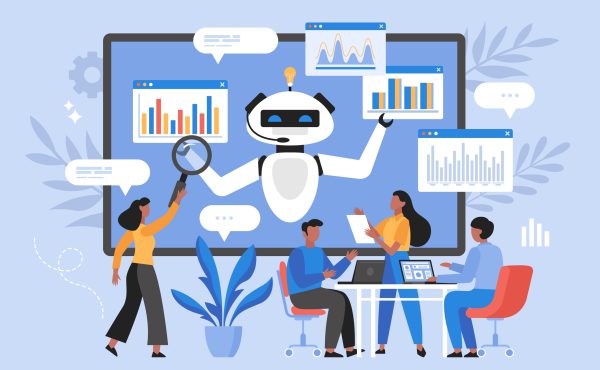Background: What is MCP and Who’s Behind It?
In late 2024, AI safety startup Anthropic introduced the Model Context Protocol (MCP) – an open standard designed to connect AI assistants to the systems where enterprise data and tools live. Sometimes informally called “Model Card++ Protocol,” MCP enables large AI models to plug into company content repositories, business applications, databases, and development tools through a unified interface. Think of MCP as the “USB-C for AI applications,” offering a universal connector for AI to access diverse data sources and services.
By open-sourcing MCP, Anthropic and its partners aim to replace fragmented, one-off integrations with a single, reliable protocol. This open standard has rapidly gained adoption. Within months, developers built hundreds of MCP connectors for various tools, and major tech companies, including Anthropic’s competitors, began integrating MCP into their platforms. MCP is emerging as a de facto standard for AI integration, reflecting a broader industry push toward transparent, interoperable AI systems that fit seamlessly into existing business tech stacks.
Why MCP Matters in an AI-Driven Enterprise World
As enterprises scale AI initiatives, they face a familiar roadblock: connecting AI models to the right data and tools. Without streamlined access to context, even the most capable AI struggles to deliver value. Historically, each AI integration required custom coding, resulting in a patchwork of connections that slowed innovation and created maintenance and security challenges.
MCP solves this by providing a “build once, reuse everywhere” integration method. Much like how REST APIs revolutionised web services, MCP standardises how AI models interact with enterprise data. This simplifies development, reduces overhead, and accelerates deployment. With MCP, teams can connect AI assistants to CRMs, file storage, analytics tools, and more using a consistent protocol. Adding new systems later becomes far easier, making MCP a key enabler for scalable AI deployments.
Early adopters report dramatic improvements in development speed and reliability. MCP enables plug-and-play AI integration across systems, eliminating redundant work and lowering technical barriers. This efficiency is critical as businesses seek to embed AI across customer service, analytics, operations, and other functions.
Enhancing Transparency and Responsible AI Practices
MCP supports transparency and responsible AI by being an open standard. Its publicly available specifications allow teams to see exactly how AI systems interact with enterprise data, creating a clear audit trail. This is particularly valuable for compliance, risk management, and ethical governance.
Standardizing context inputs also improves the explainability of AI outputs. When an AI system pulls data via MCP, organizations can trace what information influenced its decisions. This structured transparency aligns with responsible AI principles and builds trust among stakeholders.
The collaborative development of MCP further reinforces openness. Companies and developers can contribute connectors and audit the protocol, reducing reliance on proprietary, opaque middleware. This community-driven approach contrasts with closed systems that restrict visibility and limit accountability.
Risk Management and Compliance Considerations
Integrating AI into core business systems requires attention to risk and compliance. MCP helps mitigate these concerns by replacing ad-hoc, custom scripts with a standardised, secure interface. Its client-server architecture allows controlled access: each MCP server exposes only specific, permissioned actions to the AI agent, minimising misuse.
MCP servers typically run within the organisation’s infrastructure, preserving existing security frameworks. Teams can apply encryption, access controls, and monitoring as they would for any other integration. This architecture supports data protection requirements and simplifies compliance with regulations like GDPR or HIPAA.
However, MCP introduces new dynamics that require careful governance. Because AI can access multiple systems via MCP, organisations must update their policies to reflect these interactions. Each new connector should undergo a security review and be integrated into broader risk management frameworks. While the protocol offers strong foundations, enterprises must ensure MCP deployments meet their internal standards.
Some off-the-shelf MCP connectors may not yet meet stringent enterprise security expectations, so organisations may need to build custom versions with added guardrails. This allows them to retain MCP’s benefits while maintaining strict control over sensitive systems.
Vendor Accountability and Avoiding Lock-In
Strategically, MCP empowers enterprises by reducing vendor lock-in. Historically, integrating with specific AI or software platforms meant relying on proprietary methods, which made switching vendors costly. MCP changes this by offering a vendor-neutral standard supported by multiple providers.
With MCP-compatible tools, businesses can swap or mix vendors without redoing integrations. This flexibility strengthens negotiating positions and encourages healthy competition. Vendors who support MCP demonstrate a commitment to openness, while those who don’t may signal an intent to maintain control through lock-in.
MCP’s modular architecture also improves service transparency. Standardized interfaces and logging make it easier to identify performance issues or questionable practices. Enterprises can replace underperforming components with alternatives, knowing they will work with the same integration layer. This encourages vendors to deliver quality and play fairly within an interoperable ecosystem.
Strategic Planning: Integrating MCP into Your IT Roadmap
MCP is poised to become a foundational element of enterprise AI systems. To prepare, business and IT leaders should start integrating MCP into their digital strategies. A good starting point is to pilot MCP in a few integrations and train teams on its use.
Creating an internal “MCP hub” – a repository of reusable connectors for key systems – can maximize efficiency. Once built, these connectors can serve multiple AI use cases across departments, reducing redundancy and enforcing consistent security and governance standards.
This architecture supports faster, safer rollout of AI capabilities. For instance, if the marketing team develops an MCP connector for a social media platform, other teams can use it without duplicating effort. This promotes internal collaboration and strategic agility.
MCP also supports future-proofing. As new AI models and tools emerge, organizations with MCP infrastructure can quickly test and adopt them. Because MCP abstracts the integration layer, new technologies can plug in with minimal disruption, making the enterprise more adaptable.
Vendor alignment is another strategic step. When selecting AI tools or services, include MCP support as a requirement. This ensures your ecosystem remains open, interoperable, and adaptable to future changes.
Conclusion
The Model Context Protocol (MCP) represents more than just a technical standard; it’s a strategic enabler for enterprise AI adoption. By embracing open standards like MCP, organizations position themselves for greater transparency, agility, and long-term adaptability. MCP streamlines integration reduces vendor lock-in and supports responsible AI practices through consistent governance and compliance. As AI becomes embedded in every facet of business, the ability to scale securely and efficiently will separate leaders from laggards. For IT executives, adopting MCP is not just a tactical improvement, it’s a foundational move toward building an AI-ready enterprise.




